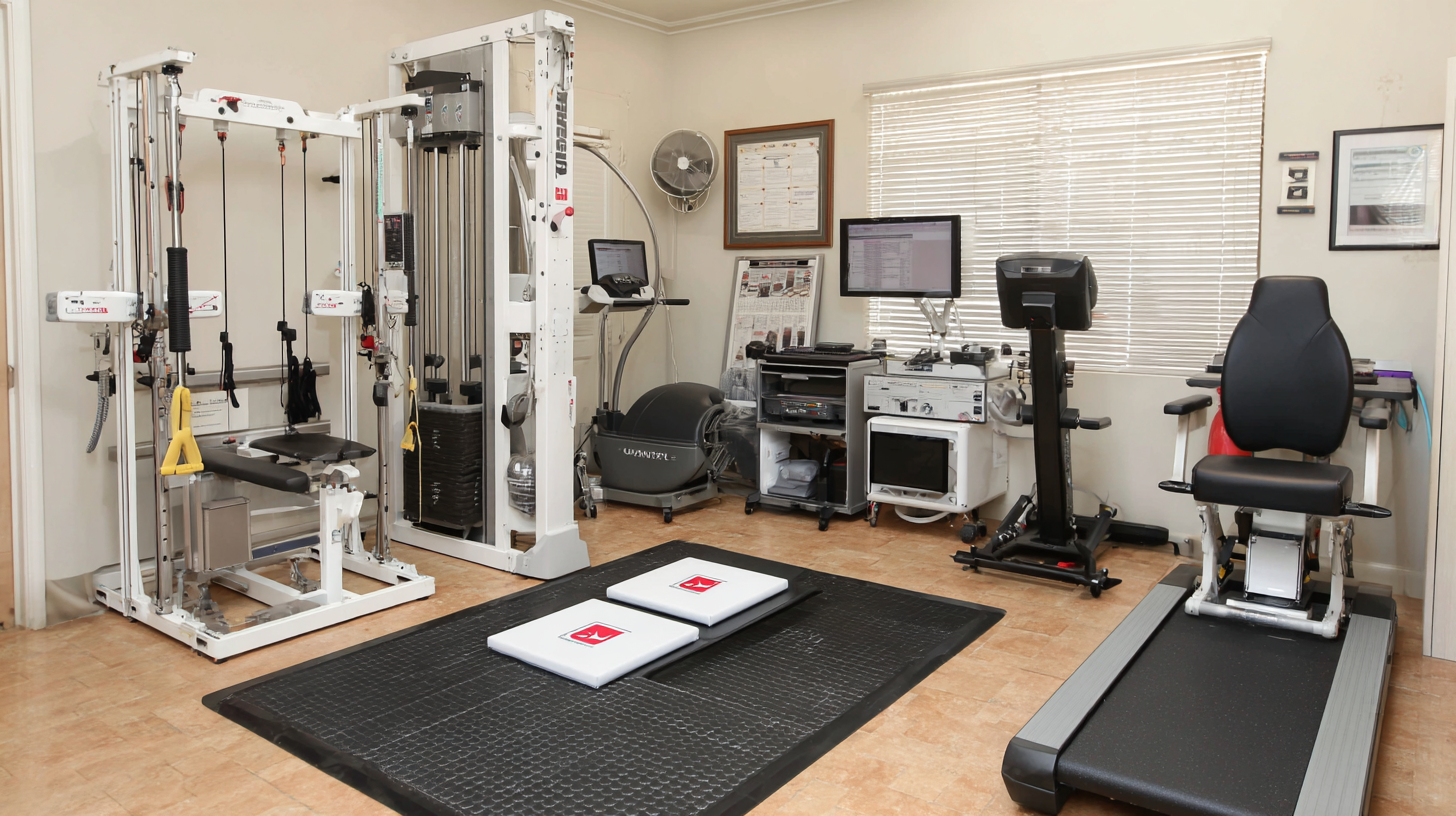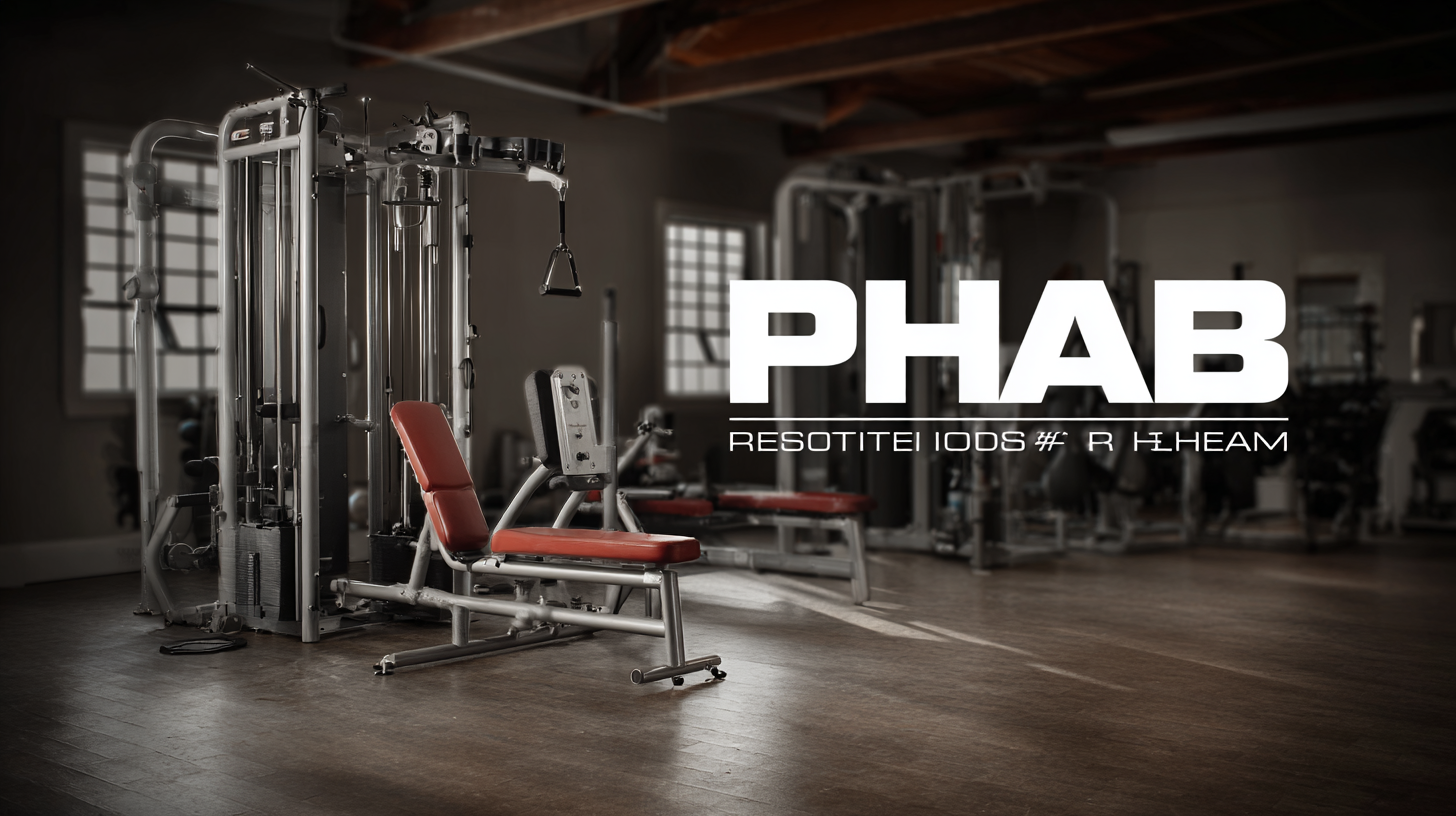Understanding Industry Production Standards for the Best Home Rehab Equipment Options You Can Choose
In the ever-evolving field of healthcare and rehabilitation, the significance of quality equipment cannot be overstated. A recent report from the Global Home Health Care Equipment Market indicates that the home rehab equipment sector is projected to reach $58 billion by 2026, reflecting a compound annual growth rate (CAGR) of 7.5% from 2021 to 2026. This surge emphasizes the need for understanding industry production standards when selecting home rehab equipment to ensure safety, efficacy, and reliability for patients. As healthcare providers and caregivers strive to facilitate optimal recovery, knowing how to source from reputable suppliers becomes crucial. In this ultimate guide, we will explore the best practices for identifying high-quality vendors that offer state-of-the-art home rehab equipment, ensuring you make informed decisions that enhance the rehabilitation experience for individuals at home.

Understanding the Importance of Industry Production Standards in Home Rehab Equipment
When embarking on a home rehabilitation project, understanding the industry production standards related to rehab equipment is paramount. These standards serve as a benchmark for quality and safety, ensuring that the tools and devices you select will perform effectively and reliably. They are set by regulatory bodies and industry experts, guiding manufacturers in producing equipment that can withstand rigorous use while meeting the specific needs of individuals undergoing rehabilitation. By choosing equipment that adheres to these standards, users can have confidence in their safety and functionality, minimizing the risks associated with poorly made products.

Moreover, adherence to industry production standards can significantly impact the overall success of rehabilitation efforts. Quality equipment designed in compliance with these guidelines not only enhances user experience but also facilitates better outcomes in the recovery process. For example, in the case of therapeutic exercise machines, those produced under strict standards often include features that promote proper body mechanics and reduce the likelihood of injury. Ultimately, understanding these standards empowers consumers to make informed choices, leading to a more effective rehabilitation journey.
Key Features to Look for in High-Quality Rehab Equipment
When selecting high-quality rehab equipment for home use, it's vital to pay attention to key features that can significantly impact the effectiveness of the rehabilitation process. According to a report by the National Institute of Health, equipment that promotes versatility and adaptability is crucial, as patients often have varying needs at different recovery stages. Consider equipment that offers multiple functions, such as adjustable resistance levels or interchangeable components, which cater to a wide range of exercises.
Tip: Look for equipment with ergonomic designs. Ergonomics are essential for preventing injuries during rehab exercises, as equipment that aligns with the body’s natural movements can enhance comfort and efficacy.
Another key feature to evaluate is the durability and materials used in the rehab equipment. The American Physical Therapy Association states that investing in high-quality materials leads to longer-lasting equipment, which ultimately saves costs in the long run. Furthermore, equipment with a sturdy frame and non-slip surfaces ensures safety during use.
Tip: Always choose equipment that provides ample warranty coverage. A longer warranty often reflects the manufacturer's confidence in the product's durability and can provide peace of mind in your investment.
Comparing Different Types of Rehab Equipment: Pros and Cons
When it comes to home rehabilitation, choosing the right equipment can dramatically affect recovery success. Different types of rehab equipment each have their pros and cons, making it essential to evaluate your specific needs before making a decision. For instance, while resistance bands are highly portable and versatile, allowing for various exercises targeting multiple muscle groups, they may not provide the same level of resistance for advanced users as traditional weights. According to a report by the American Physical Therapy Association, nearly 70% of patients prefer using bands during early recovery stages due to their ease of use and flexibility.
On the other hand, stationary bikes are beneficial for cardiovascular rehabilitation, enabling patients to perform low-impact exercises. However, they can be costlier and occupy more space in the home. A study published in the Journal of Rehabilitation Research shows that patients using stationary bikes showed a 20% faster recovery than those relying solely on bodyweight exercises.
**Tips**:
1. Assess your space and budget: Evaluate how much room you have for equipment and how much you are willing to invest.
2. Consider your rehabilitation goals: Choose equipment that aligns with your long-term recovery plans to ensure you're making the most informed decision.
How to Choose the Right Rehab Equipment Based on Your Specific Needs
When selecting the right rehabilitation equipment for home use, it is essential to consider your specific needs. According to a 2021 report by the National Center for Medical Rehabilitation Research, appropriate equipment can significantly enhance recovery outcomes, improving mobility and independence in 78% of users. Therefore, evaluating your individual circumstances, including the extent of your injury or condition, is crucial when making a choice.
Different types of rehab equipment serve various rehabilitation needs. For instance, if you are recovering from a lower limb injury, items such as resistance bands and balance boards may be beneficial. A study published in the Journal of Rehabilitation Research and Development noted that customized rehabilitation equipment led to a 65% faster recovery rate in patients adhering to individualized plans. Choosing devices that align with your therapy goals will not only expedite the rehabilitation process but also increase your motivation to engage with your program effectively.

Staying Updated: Trends in Home Rehab Equipment and Industry Standards
In the ever-evolving world of home rehabilitation, staying updated with the latest trends in equipment and industry standards is crucial for both practitioners and patients. Advances in technology have led to the development of more efficient and effective rehabilitation tools designed to enhance recovery outcomes. Equipment that incorporates smart technology, for instance, allows for real-time tracking of patient progress and tailored exercise programs, catering to individual needs. This innovation not only improves engagement and motivation but also ensures a more personalized approach to healing.
Moreover, understanding industry standards is vital for ensuring safety and efficacy in rehabilitation practices. Organizations are constantly updating their guidelines to reflect new research findings and technological advancements. Adhering to these standards aids caregivers in selecting the best equipment available, reducing the risks associated with outdated practices. By keeping abreast of these trends and guidelines, healthcare providers can offer patients the most effective treatments, ultimately leading to better recovery experiences.
